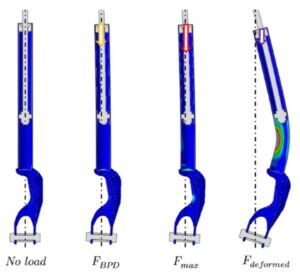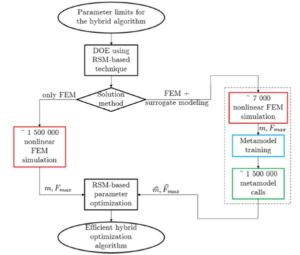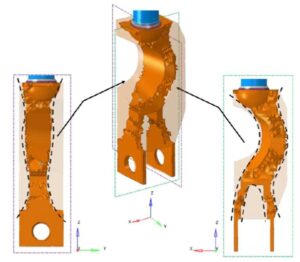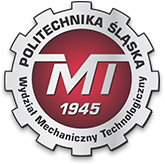On 8 February 2024 at 12:00, the defence of the thesis of Przemysław Sebastjan, M.Sc., entitled: “Optimisation of automotive suspension components with consideration of their unstable behaviour“, took place.
The dissertation was supervised by Prof. Wacław Kuś, and the reviewers were Prof. Marta Kurek, from the Opole University of Technology, Prof. Monika Pernach, from the AGH University of Science and Technology in Kraków, and Prof. Wojciech Sumelka from the Poznań University of Technology. The Doctoral Committee has passed motions to the Council of the Discipline of Mechanical Engineering to grant the degree of Doctor of Technical Sciences in the discipline of Mechanical Engineering on Przemysław Sebastjan, and to honour his doctoral thesis.
This dissertation deals with the optimization of the shape of automotive shock absorber components in regard to their mass, taking into consideration the constraints associated with the stability of the entire suspension system. The first part of the dissertation presents the fundamental theoretical background needed to understand and reproduce the topology optimization process, including the work principles of automotive shock absorbers, their role in the chassis, the method of simulating their behavior under critical loads using the finite element method, as well as optimization and metamodeling techniques. The main part of thesis focuses on the adaptation and extension of the existing methods of topology and shape modification to the considered shock absorber problem. As a result, two methods based on the implicit description of the geometry are proposed: the spatial level set method and the projection method. Design variables from both methods were combined with the proposed hybrid optimization algorithm, consisting of consecutive execution of the genetic algorithm (in one of two variants) and the evolutionary strategy (1+λ). Subsequently, this hybrid optimization algorithm was subjected to the process of tuning its parameters, i.e. the genetic operators and the parameters of the penalty function, in order to increase its efficiency within the assumed number of iterations (simulations). For this purpose, two groups of metamodels were created: artificial neural networks and Krigings. Best-performing models were then used to replace the costly FEM analysis in the DOE plan utilizing the response surface method, which enabled the verification of the nonlinearity of the input parameters of the hybrid algorithm (genetic operators, parameters of the penalty function) on its ability to minimize the mass of the suspension system while maintaining its stability. The algorithm adapted in this way was verified in the final part of the dissertation on two real industrial examples: optimization of a passive and semi-active automotive shock absorber. Both methods of geometry modification and two versions of the hybrid algorithm were compared, as well as the metamodeling capabilities of the proposed surrogates to replace the FEM simulation during the optimization process. The thesis is summarized with a discussion of the results and formulation of the further scope of work regarding the optimization of automotive shock absorbers in terms of their mass, with consideration of their unstable behavior.













